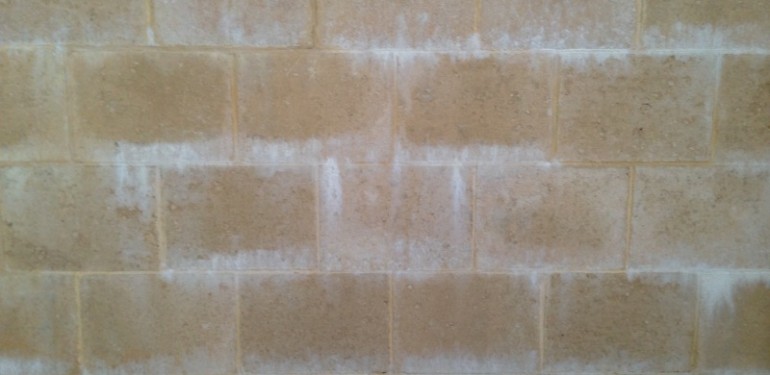
Efflorescence, a cosmetic problem or a structural threat?
|
What is efflorescence? Efflorescence is a fine, white, powdery deposit of water-soluble salts left on the surface of masonry as the water evaporates. Three conditions must exist before efflorescence can occur:
|
|
Can efflorescence damage my home?
Generally efflorescence is a cosmetic problem. However, as stated above, there must be sufficient moisture content in a masonry product for efflorescence to take effect. Excessive moisture can contribute to many structural issues, such as rising damp or mould growth, & can even cause concrete cancer & foundation movement. If you are concerned that your home may be subject to moisture damage, it is always best to contact a suitably qualified inspector.
How do I remove efflorescence?
- Firstly it should be noted that often the removal of efflorescence could be a laborious & ultimately unsuccessful task. The following methods may be recommended for removal of efflorescence:
- Get the wall bone dry (where possible), and then try to remove the powder with a stiff brush. Lift off any remaining crystals with a damp sponge. This method is our recommendation for removal.
- Water blasting & hosing may initially look good, although ultimately you have just added moisture to the problem & during the drying process the problem may increase.
- Acids often state that they will clean off efflorescence although the efflorescence must be washed down before application, & as above the results may initially seem successful but you may have just restarted the cycle. We believe the inconvenience & danger to the user outweighs the likelihood of a successful outcome.
- Alkaline cleaners could also possibly work although research suggests that the alkali content in Portland cement is a key contributed towards efflorescence, & as such there is a real possibility that you could be putting more salts into the wall.
Efflorescence will often be described as a ‘passing nuisance’, although as explained it indicates a potential moisture problem. If located in an area of little importance when exposed to moisture then efflorescence should be seen for what it is, a sign of life from a product made of natural, raw materials.

